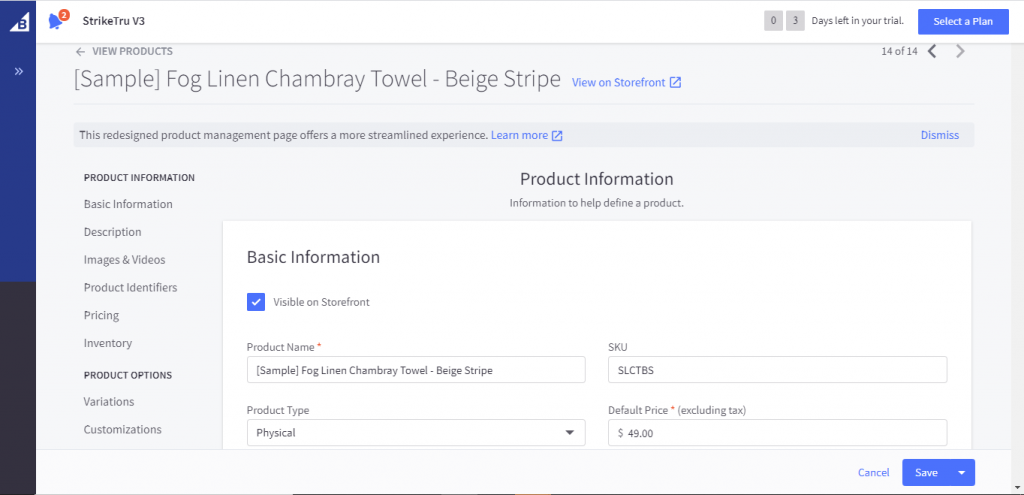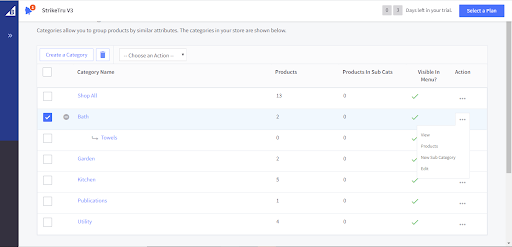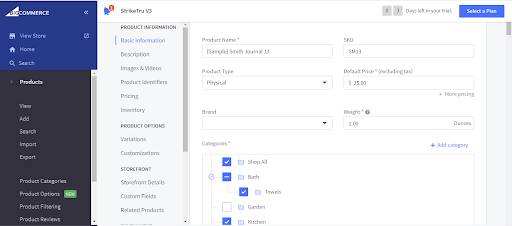


Mid-market firms in a growth phase find themselves struggling to scale their businesses when they’re confronted with complicated product data management requirements. Those that are still managing a large number of SKUs on legacy systems (“manual” PIM) and have to revise their product catalog at a rapid pace end up being the most counterproductive. This fuels further costs and complexities like inefficient workflows, siloed information, missing digital assets, overlapping operations, inconsistent formats and more. Needless to say, this has a bigger impact on overall business performance such as:
- Drop in conversion rate
- Delayed time to market
- Increase in rate of returns and cart abandonment
- Increase in order and delivery errors
- Bad customer experience and brand reputation
- Inefficient internal workforce
With eCommerce outpacing overall retail growth and a sea of competition, even a small hiccup in operations can be a big setback. A modern PIM tool working together with an eCommerce platform will result in streamlined operations in the back-end and create engaging user experiences in the front-end.
Let’s examine the reasons why an innovative eCommerce integration like this one gets you results:
- the drawbacks of setting up a product catalog on BigCommerce
- the benefits of BigCommerce and PIM working together
At a high-level BigCommerce has a fixed number of product attributes, with an option to add custom (name/value) type attributes. It offers a fairly standard product category concept. It allows you to have a custom price list and a special attribute for brand management. There is a concept of configurable products (products which vary by color or size).
From a product catalog perspective, BigCommerce consists of the following.
- Product Attributes
- Product Categories
- Product Variations
- Product Options aka shared variant options
The following sections explain each of these at a high level:
Product Attributes
BigCommerce offers a fixed set of out of the box attributes in various logical groups as you can see in the below screenshot. Attribute groups are – Basic Information, Description, Images and Videos, Product Identifiers, Pricing, Inventory, Variations, Customizations, Inventory, Storefront Details, Custom Fields, Related Products, Dimensions & Weight, Shipping Details, Purchasability, Gift Wrapping, SEO and Open Graph Sharing.



Product Categories
Merchants can create categories and category trees. This is a pretty standard feature with actions available. The challenge is that you cannot create multiple category trees or multiple catalogs, for example you want to create a sales catalog and a master catalog. You cannot have two base category nodes; all categories need to be part of one root.



A product can be assigned to one or more categories.



Product Variations
Variations are used for products that are available in different colors, sizes, or styles. A common use case for variations is for clothing that comes in several colors and sizes. Variants can have their own image, price, and weight, and they typically have their own SKU and track stock.
Variations are created via adding a variant option or a shared variant option to the product.
Stock keeping units, or SKUs, are codes that are used to tell variants apart and track inventory. When you create a new variant option, SKUs are automatically created for all your new possible variants. You may edit the automatically generated SKUs if you want to assign your own identifiers. The variant can have their own image (example – blue color shirt image). By default, variants will use the product’s main product image. Only one image can be assigned to a variant.
Product Options aka shared variant options
If you have several products that use the same variant options and values, you can save time by using shared variant options to set up the option once and reuse it across multiple products.
- Shared variant options cannot be edited or customized on the product-level.
- Editing a shared variant option will update every product to which it is applied; variants with unique SKUs will be automatically regenerated.
- Shared variant options cannot be deleted if they are currently associated with a product.
Why should BigCommerce & Akeneo PIM work together?
Though BigCommerce is a very flexible and popular eCommerce platform, it’s not a proper PIM tool when it comes to the product catalog part of the platform. Its product catalog is a destination for the product data and not a place to manage the product data. Today’s eCommerce needs are much more sophisticated and cannot be handled in BigCommerce backend.
Here are the key reasons why BigCommerce merchants need a proper PIM solution :
Product data collection challenges
First and foremost, there is a need to centralize all product content in one core central repository. Data collection step of the product data journey has its own set of challenges – data volume, data variety, data velocity, data quality, data onboarding.
Your product data is sourced from your suppliers and other internal and external systems and needs a proper product information management (PIM) tool which allows all kinds of data attributes, images, documents, etc. to be stored in the PIM tool. PIM allows you to tackle all these challenges and is a scalable system designed for this very purpose.
Product Information management challenges
In this digital age, your product information is your product, as today’s customers are searching and shopping for products all the time on a variety of devices and pods. Before they actually decide to buy the product, they want to see rich, informative, compelling product data on all of your digital channels.
This requires an intentional and dedicated effort to manage product data. Key challenges are data centralization, flexible data modeling, multi-channel and multi-locale data, data quality rules, data enrichment rules, bulk edit, searchability, workflow automation, language translations, data access controls, SEO data management, pricing and promotions management.
PIM is a flexible tool to manage your product data, repair and prepare data, approve the data and then integrate it to the BigCommerce Product Catalog. PIM features tackle the challenges listed in the above example – business rules, bulk edit, completeness, channel and language level data enrichment, data security, meta-data management, etc.
Product data syndication challenges
Multiple product data destinations
Though your BigCommerce store is one of the key destination systems for your product data, the product data is needed by all of your digital channels like mobile, print, marketplaces, data pools, and others (Agencies, internal tools etc.). PIM is the central tool that is best suited for syndicating your product data to all these target systems. Your BigCommerce store is one of the destination systems, rather a central repository of the product data.
eCommerce web sync issues
Your current legacy tool is having sync issues, there is no predictability on when your eCommerce product data load will be updated. In many cases, this sync process is a legacy tool and no one knows how to change or make modifications and you are stuck.
Meta-data sync
Your BigCommerce store rich meta-data in addition to the core product record. This includes product categories, product options (drop/down), brand data, custom attributes, custom price lists, etc.
StrikeTru’s Akeneo PIM Connector for BigCommerce gives you a solid eCommerce technology stack at an affordable price. It puts your product content center stage in the eCommerce ecosystem and redirects your brand’s focus on creating omnichannel shopping experiences that drive sales. Find out what makes StrikeTru’s PIM integration for BigCommerce unique.
Find out more here or get in touch for a consultation.
Read more: Akeneo PIM Connector for BigCommerce – Overview







